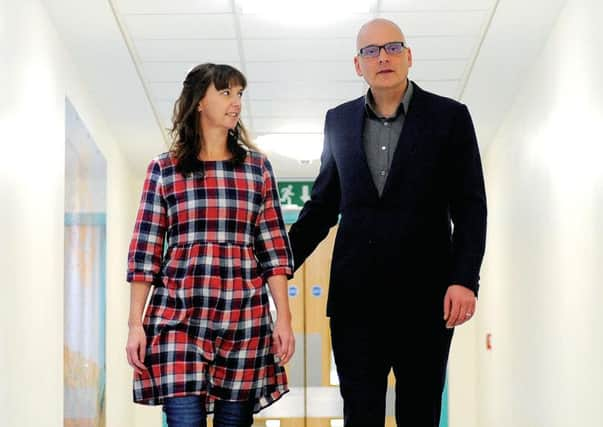Experimental anti-Ebola drug used to treat Pauline


Dr Michael Jacobs, the head of the infectious diseases unit at the Royal Free Hospital in London who was in charge of the Scottish nurse’s intensive care, said he obtained a supply of ZMabb after clinical discussions with his Canadian counterparts.
The experimental drug was used in place of ZMapp, which has already been used on Ebola patients, after it emerged there are currently no supplies available.
Advertisement
Hide AdAdvertisement
Hide AdDr Jacobs said: “There’s some different anti-viral drugs out there and I’m not going to list all of them. The word experimental tells you everything you need to know about them. They’ve been brought into use earlier than would have happened in any other circumstance because this is an emergency.
“They haven’t been tested in the same way that most of the medicines we use have been tested and we know that, and we know there are limitations and that was a discussion we had with Pauline.
“We used the experimental drug ZMabb – not ZMapp, as there is no ZMapp in the world at present – but ZMabb is a close relative of it.
“One thing that is very important is that we are very fortunate to obtain ZMabb from the very place it was developed in the world, which is the public health agency in Canada. That’s where they developed this treatment and they’ve got a very limited supply of it.
“But after having a clinical conversation with them they were prepared to allow us to use some of it and we’re incredibly grateful for that.”
The doctor said the drug, which he revealed did not give the Scottish nurse any side effects, could not be solely held responsible for her remarkable recovery. In fact he said it was too soon to know if the drug helped at all.
Dr Jacobs said: “It’s really difficult to say how much the drug helped because in one person it’s impossible to draw that conclusion, but Pauline never got any side effects from it which is really good news.
“Of course if we didn’t think it would help we wouldn’t have used it so I really can’t say that was the thing that turned things round.
Advertisement
Hide AdAdvertisement
Hide Ad“You just can’t draw that conclusion from one use – that’s why we have these big trials for drugs where you test them probably.”
He added: “So we could never be as certain as we would have liked to have been about how good they were going to be, also about how effective and the possible side effects.
“They would normally have gone through a much larger development process before they were used in humans.
“These medicines, to be clear, have been used in humans for other reasons – it’s whether or not they work for Ebola. So it’s a mixture of some drugs that haven’t been used much in people then some drugs that we call re-purpose drugs. This means they are being used in a different way from how we are used to using them.
“It’s well known we use convalescent plasma which is taken from the blood of people who have recovered from Ebola and that contains some of their own antibodies to fight the infection.”
Dr Jacobs said his team remained focused on giving the best care they could to Cafferkey, especially when her condition deteriorated three weeks ago to critical when she was left fighting for her life.
He said: “We said she was critical and we don’t use that term lightly, the way we think about it is – ‘What’s the problem today? What can we possibly do to help?
“There’s a level of worry, anxiety and responsibility that comes into it, all those things – you know we’re not robots, we’re humans here as well.
Advertisement
Hide AdAdvertisement
Hide Ad“It’s hard to know in the end. It probably comes down to the fact that she had to cure herself, she used her own immune system which has cleared the virus but we’re very fortunate here, we’re very fortunate that we have special facilities for looking after people. This gives people the best chance and time for their own immune system to fight the virus. We keep people well long enough so their immune system does clear the virus.”
Dr Jacobs said his focus was on treating Cafferkey, not trying to find out how she caught the virus.
He added: “My concern was never how Pauline caught Ebola. My concern was to make her better – simple as that. As far as I was concerned we were starting from where we were starting.
“What’s clear now in West Africa is the volunteers are really beginning to have an impact and that’s thanks to people like Pauline.”
The expert also described how his team were “thrilled” the nurse managed to recover from the potentially fatal illness. He said: “We’re just thrilled with the outcome. I’m so proud of the whole team, there’s the people you immediately think of like the doctors and nurses, then there’s lots of other elements that have to come together for things to work.
“If you think about everything a hospital needs from food to power, it needs a lot of things and a lot of people to make it work and everyone has worked incredibly hard.”
SEE ALSO:
FOLLOW US
-----------------------------------------
-----------------------------------------
SCOTSMAN TABLET AND MOBILE APPS